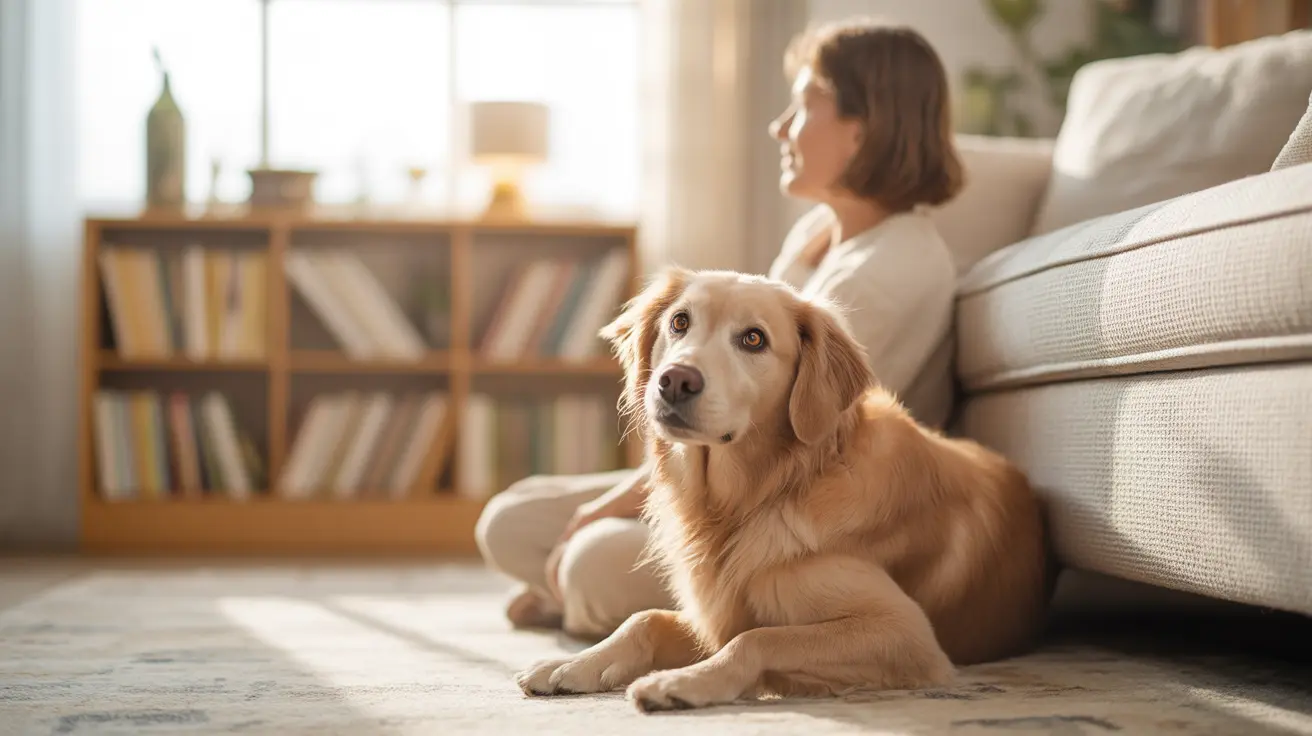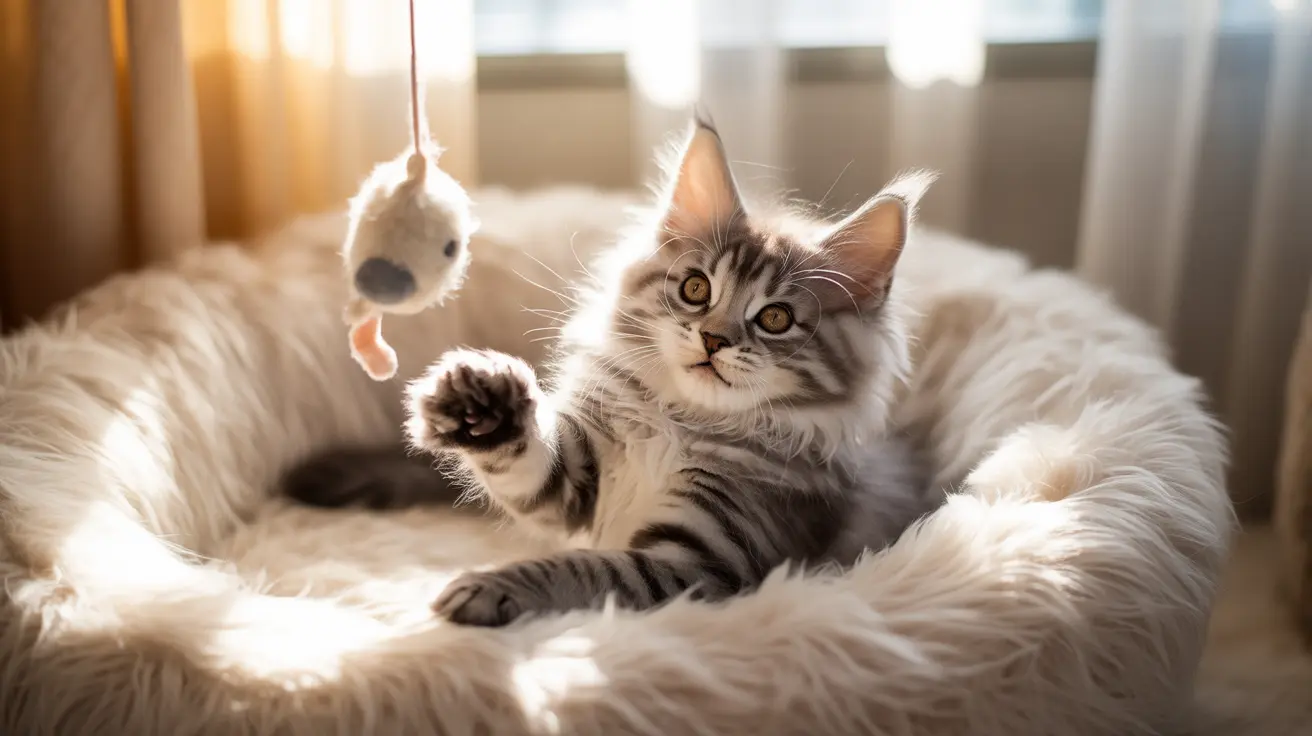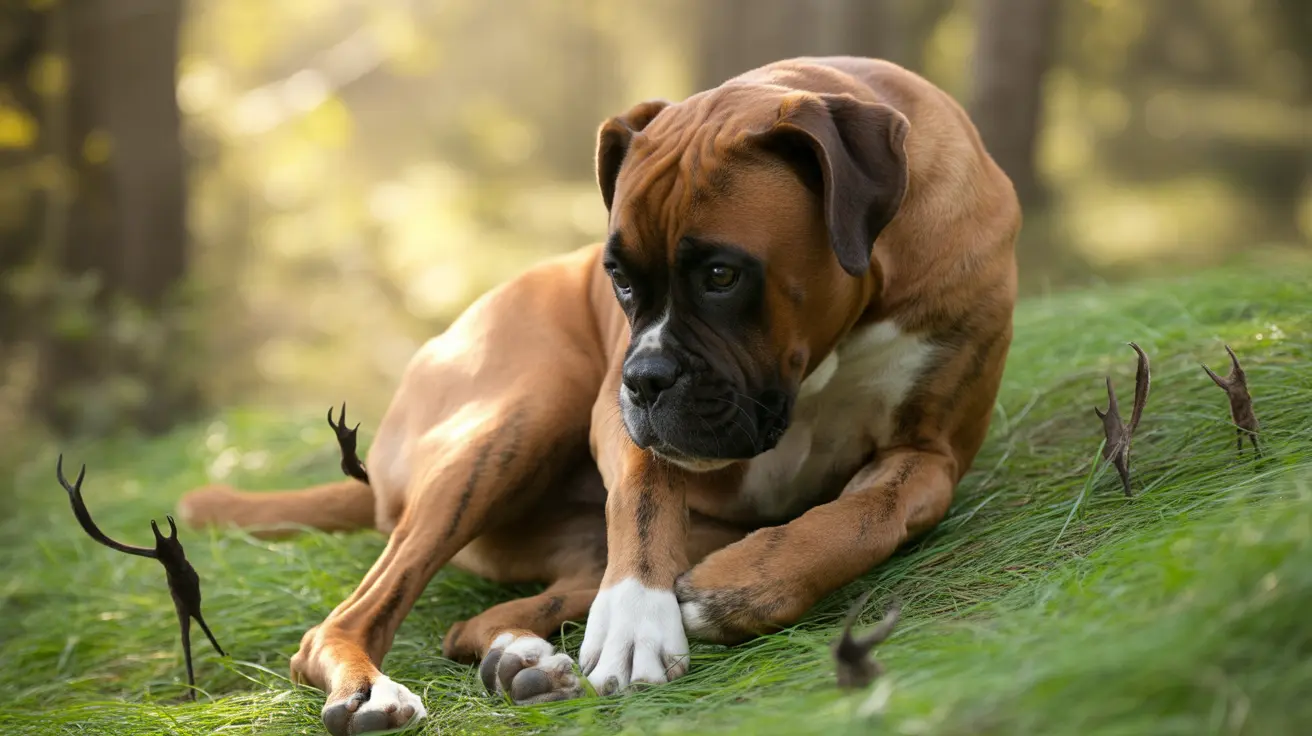The Art of Capturing Flowing Beauty in Motion
The Afghan Hound's magnificent silky coat has captured hearts for centuries, but few have transformed this natural beauty into stunning photographic art quite like photographer Salla Kuikka and her remarkable Afghan Hound, Baboon. Their collaborative work in Afghan Hound hair model photography demonstrates how the breed's distinctive flowing locks can become the centerpiece of breathtaking visual storytelling. This unique partnership showcases not only the Afghan Hound's natural elegance but also the deep emotional bond between pet and owner that transcends traditional photography.
Afghan Hound hair model photography represents a specialized niche that celebrates one of the breed's most striking characteristics – their long, fine-textured coat that was originally developed as protection from harsh mountain climates in Afghanistan. When captured in motion, particularly during jumps and leaps, this coat creates an almost ethereal display of flowing beauty that has made the Afghan Hound a favorite subject for artistic photography.
The Story Behind Baboon: From Emotional Support to Hair Model Star
Baboon's journey into Afghan Hound hair model photography began as something much more profound than artistic pursuit. This talented Afghan Hound provided crucial emotional support to photographer Salla Kuikka during her grief following the loss of another beloved dog. The therapeutic nature of their photography sessions helped Kuikka process her loss while simultaneously discovering Baboon's natural talent for posing and jumping on command.
The bond between Kuikka and Baboon exemplifies the emotional benefits of pet companionship during times of grief. Afghan Hounds, despite their reputation for being aloof and dignified, often form profound loyalties with their owners. This breed's temperament – described by the American Kennel Club as "dignified, aloof, independent" yet capable of being "sweet and humorous with familiar humans" – makes them ideal companions for those seeking both emotional support and artistic collaboration.
Training Afghan Hounds for Photography: Mastering the Perfect Jump
Training an Afghan Hound for hair model photography requires understanding the breed's unique characteristics and independent nature. Afghan Hounds rank low in obedience intelligence, requiring many repetitions to learn commands, which means patience and positive reinforcement are essential when training them for specific photographic poses or jumps like Baboon's signature leaps.
The training process for Afghan Hound hair model photography involves several key techniques:
- Consistent positive reinforcement to work with the breed's independent nature
- Short, engaging training sessions to maintain their attention
- High-value treats and rewards to motivate the naturally stubborn Afghan Hound
- Gradual progression from basic commands to complex jumping sequences
- Early socialization to help them remain calm in various outdoor photography settings
Afghan Hounds have a high prey drive and strong instincts that may override obedience commands like "stay" or "come" when they spot potential prey. This characteristic requires photographers to work in controlled environments and maintain the dog's focus through engaging training methods rather than relying solely on commands.
Capturing Motion: Photography Techniques for Afghan Hound Hair
Afghan Hound hair model photography presents unique technical challenges and opportunities. The breed's long, silky coat creates stunning visual effects when captured in motion, particularly during jumps where the flowing hair appears almost weightless against natural backgrounds. Successful photography of Afghan Hounds in motion requires specific technical considerations and environmental planning.
The key to effective Afghan Hound hair model photography lies in timing and camera settings. Fast shutter speeds are essential to freeze the motion while maintaining sharp detail in the flowing coat. The breed's distinctive features – including their long topknot, shorter-haired saddle on the back, and the unique small ring on their tail's end – all contribute to creating dynamic compositions when properly captured.
Optimal Photography Settings and Environments
Kuikka's work with Baboon takes place in diverse natural settings including forests, snow, and water at sunset, each environment offering unique opportunities to showcase the Afghan Hound's flowing coat. These varied settings not only provide stunning backdrops but also challenge both photographer and dog to adapt their techniques to different lighting conditions and terrain.
The Afghan Hound's adaptation to various climates makes them excellent subjects for outdoor photography. Their coat, originally developed for protection in cold mountain climates, performs well in different weather conditions, though photographers must consider the breed's sensitivity to extreme temperatures and adjust shooting schedules accordingly.
Understanding the Afghan Hound: Breed History and Characteristics
To excel in Afghan Hound hair model photography, understanding the breed's history and characteristics is essential. The Afghan Hound is a basal breed that predates modern breeds and is closely related to the Saluki. Originally developed as hunters in the hill country of Afghanistan, they were bred to pursue leopards and gazelles using their exceptional sight and quick footwork.
Two main strains form the modern Afghan Hound breed: the Bell-Murray strain from Balochistan, which is less heavily coated with a steppe or desert type appearance, and the Ghazni strain from Kabul, featuring the more heavily coated mountain type that's particularly striking in photography. These strains were mixed and recognized in a standard written in 1948, creating the modern Afghan Hound we see in contemporary hair model photography.
Physical Characteristics Ideal for Photography
Afghan Hounds stand 25-27 inches tall and weigh 50-60 pounds, with a medium-large, slim build that creates elegant silhouettes in photography. Their distinctive features include high, wide hipbones adapted to rough terrain, which contribute to their graceful jumping ability that makes them excellent subjects for action photography.
The breed's coat may be any color, including black, cream, blue, tan, red, and brindle, though white markings, especially on the head, are discouraged in show standards. Many Afghan Hounds have a black facial mask, and some feature a beard on the lower jaw known as a mandarin, adding character to photographic portraits.
Coat Care for Photography: Maintaining the Afghan Hound's Signature Look
Proper coat maintenance is crucial for successful Afghan Hound hair model photography. The long, fine-textured coat requires considerable grooming to achieve the flowing, silky appearance that makes these photographs so striking. Regular grooming not only maintains the coat's photogenic quality but also ensures the dog's comfort during extended photography sessions.
Afghan Hounds require several hours of brushing per week to prevent mats and maintain their silky texture. The grooming routine should include regular bathing followed by blow-drying to achieve maximum volume and flow. Professional photographers working with Afghan Hounds often coordinate grooming schedules with shoot dates to ensure optimal coat condition.
Special Considerations for Photography Prep
Before Afghan Hound hair model photography sessions, special preparation ensures the best results. Some photographers and owners use a snood to keep the dog's hair controlled during feeding, preventing food particles from affecting the coat's appearance. Regular ear inspection and cleaning prevent infections that could affect the dog's comfort and performance during shoots.
The breed's hypoallergenic qualities, due to their coat characteristics, make them suitable for extended indoor studio sessions when weather doesn't permit outdoor photography. However, their exercise needs – approximately two hours daily – must be met through activities like lure coursing, hiking, or swimming to maintain their physical condition for demanding photography work.
Health Considerations for Working Afghan Hounds
Afghan Hounds engaged in hair model photography require careful health monitoring. The breed has an average lifespan of 11.1-14 years and is prone to specific health issues that photographers and owners must consider. Major health concerns include allergies, cancer, hip dysplasia, and hypothyroidism, all of which can affect a dog's ability to perform physically demanding photography work.
Afghan Hounds are sensitive to anesthesia due to low body fat, making routine veterinary care particularly important for maintaining their health for photography work. They're also prone to chylothorax, a condition involving lymphatic fluid leakage into the chest that can be fatal if untreated, requiring immediate medical attention if symptoms appear.
The breed is susceptible to gastric dilation and volvulus (bloat), a life-threatening stomach condition. Photographers working with Afghan Hounds should limit intense exercise around feeding times and be aware of symptoms. Some owners consider preventative gastropexy surgery to reduce this risk, particularly for dogs engaged in regular athletic activities like jumping for photography.
The Emotional Bond: How Photography Strengthens Human-Dog Relationships
The relationship between Kuikka and Baboon illustrates how Afghan Hound hair model photography can strengthen the emotional bond between pet and owner. The collaborative nature of creating art together provides mental stimulation for both human and dog while building trust and communication skills that extend far beyond photography sessions.
Afghan Hounds, despite their independent nature, form profound loyalties with their owners. Their temperament – typically aloof and dignified but happy and clownish when playing – makes them excellent partners for creative endeavors. The breed's reserved but loyal nature toward family members creates the perfect foundation for the patience and trust required in professional photography work.
The therapeutic benefits of working with Afghan Hounds in photography extend beyond the immediate joy of creating beautiful images. The routine, physical activity, and focused attention required help both dog and owner maintain mental and physical health while pursuing a shared passion.
Frequently Asked Questions
How long does it take to train an Afghan Hound for photography work?
Training an Afghan Hound for hair model photography typically takes several months to a year, depending on the complexity of desired behaviors. Afghan Hounds require many repetitions to learn commands due to their independent nature, so patience and consistent positive reinforcement are essential throughout the training process.
What camera settings work best for capturing Afghan Hound hair in motion?
Fast shutter speeds (1/1000th second or faster) are essential for freezing the motion of flowing Afghan Hound hair. Use continuous autofocus mode and high ISO settings when necessary to maintain sharp images in various lighting conditions, particularly during outdoor sessions in forests or during sunset photography.
How often should Afghan Hounds be groomed for photography work?
Afghan Hounds require several hours of brushing per week and should be bathed and blow-dried before photography sessions to achieve optimal coat flow and volume. Professional photography may require more frequent grooming, potentially before each shoot, depending on environmental conditions and the dog's activity level.
Are Afghan Hounds suitable for indoor studio photography?
Yes, Afghan Hounds can work well in indoor studios due to their hypoallergenic coat characteristics and generally calm demeanor with familiar handlers. However, they require approximately two hours of daily exercise, so studio sessions should be scheduled around their exercise needs to ensure optimal performance.
What health precautions should be taken when working with Afghan Hounds in photography?
Monitor for signs of bloat and avoid intense exercise around feeding times. Ensure regular veterinary checkups focusing on hip health, eye conditions, and thyroid function. Be aware of the breed's sensitivity to anesthesia and watch for symptoms of chylothorax or other breathing difficulties during physical activity.
How do Afghan Hounds compare to other breeds for hair model photography?
Afghan Hounds are uniquely suited for hair model photography due to their long, silky coat that flows dramatically in motion, their natural jumping ability adapted from their hunting heritage, and their aristocratic bearing that creates striking compositions. Their coat texture and length surpass most other breeds for this specific type of photography.
What should I expect to invest in an Afghan Hound for photography work?
Afghan Hounds typically cost $2,000-$3,000 from reputable breeders, with ongoing expenses including high-quality food (2-2.5 cups daily), extensive grooming supplies and services, regular veterinary care including breed-specific health screenings, and professional training for photography work.
Conclusion
Afghan Hound hair model photography represents a beautiful fusion of artistic vision, breed expertise, and emotional connection. The success of photographers like Salla Kuikka and her remarkable partner Baboon demonstrates how understanding the Afghan Hound's unique characteristics – from their flowing coat and jumping abilities to their independent yet loyal nature – can create truly spectacular visual art. This specialized form of photography not only celebrates the breed's natural beauty but also strengthens the profound bond between human and dog through collaborative creative expression.
For those inspired to pursue Afghan Hound hair model photography, remember that success requires patience, consistent training, proper health care, and a deep appreciation for this ancient breed's noble character. The investment in time, training, and care pays dividends in both artistic achievement and the irreplaceable emotional connection that develops through working closely with these magnificent dogs. Whether you're seeking to capture the perfect jumping shot or simply want to document your Afghan Hound's flowing beauty, understanding their needs and characteristics will ensure both stunning photographs and a happy, healthy canine partner.






